What is My Skin Type? [Dermatologist Guide]
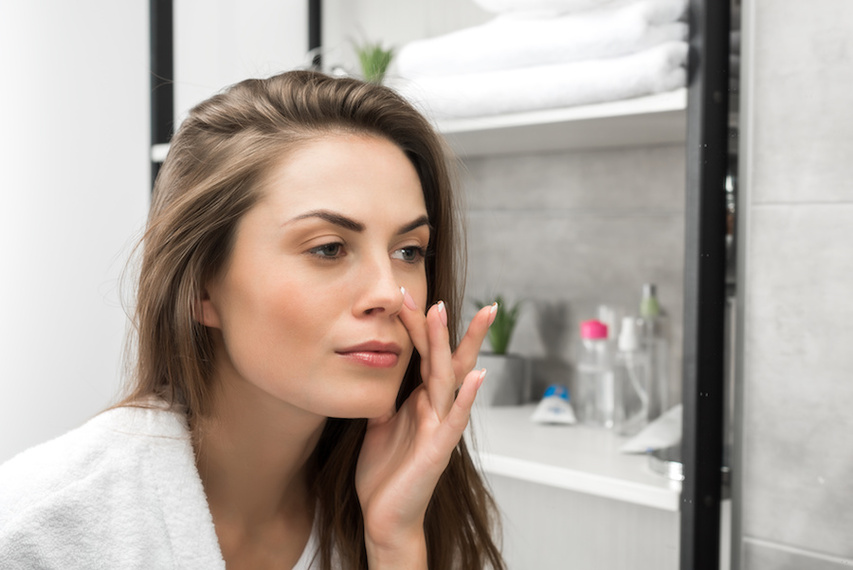
Knowing what skin type you have is super important! Your skin type should determine every step in your skincare routine including the different cosmetics you choose, makeup you wear (or don’t!), and in the case of acne, the different treatments and medications you use. While figuring out your skin type is actually fairly simple, you may be surprised how many people don’t know this valuable piece of information. Understanding this characteristic about yourself will help you achieve the healthiest, clearest skin possible and avoid wasting time, money, and energy on products and treatments that aren’t suited for your skin.
So...do you know what your skin type is? Kinda, sorta, maybe...no? No worries, we got you covered! Here is some helpful info (+ an easy DIY skin type test!) to help you determine what your skin type is and make more informed decisions about your skin and skincare moving forward!
What is skin type?
The term “skin type” refers—primarily—to the amount of oil production in our sebaceous glands (a fancy medical term for oil glands). This rate of oil production depends on a variety of factors including genetics (biological tendencies we can thank our parents for ...) hormonal changes, age, diet, weather, and other environmental factors and conditions. In addition to oil production, skin type is also determined by the amount of water in the skin as well as skin sensitivity.
What are the different skin types?
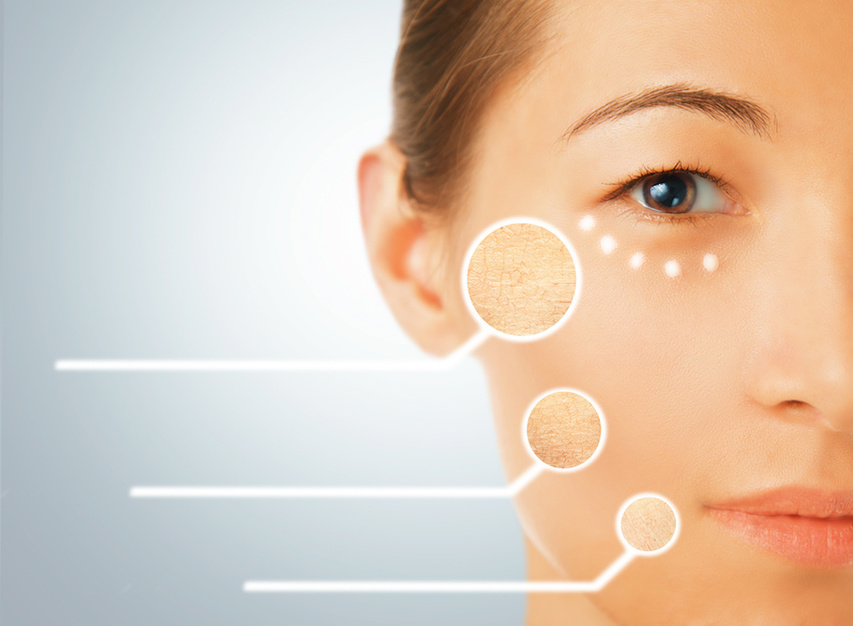
While every person’s skin is unique, Here are the most common skin types that most of us fall into.
-
Normal skin
-
Oily skin
-
Dry skin
-
Combination skin
-
Sensitive skin
Note: Acne-prone skin is not necessarily a skin type but a separate category that can affect several different skin types!
It’s important to understand that each person’s skin type can change based on changes in the factors above! Even if you have oily skin a few years ago, it’s totally possible to have combination or dry skin now or in the future. Monitor your skin over time (even from season to season) and adjust as needed!
What is a normal skin type?
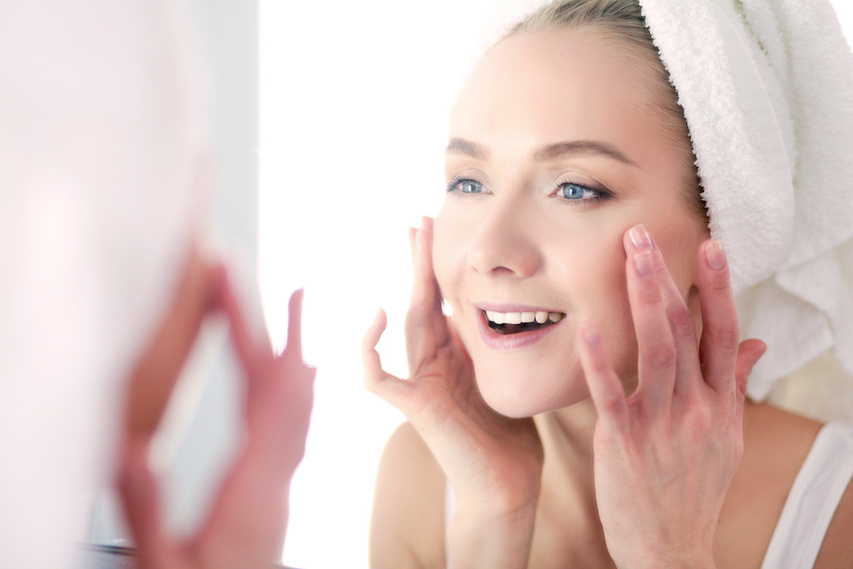
Dermatologists use the term, “normal skin type” to refer to skin that (typically) doesn’t experience any kind of excessive skin conditions. In other words, people #blessed with “normal skin” are less likely to have skin that gets too dry or too oily, irritated, and don’t often experience breakouts.
Why do “normal” skin types get to avoid these annoying skin problems? Normal skin has a great balance of lipids (oil) and water (moisture) and does not usually have skin sensitivities. With normal skin, the pores are usually small and the skin is typically quite smooth with an even skin tone. This type of skin can produce more oil throughout the day, resulting in a mild “shine” on the skin, but nothing excessive.
OK, now that we’re all thoroughly jealous of people with normal skin, let’s move onto other skin types!
What is a dry skin type?
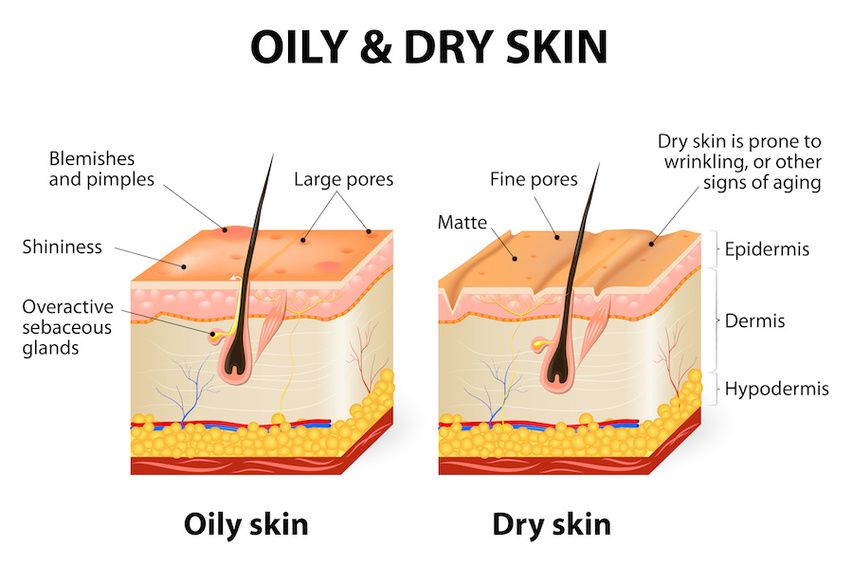 “Dry skin” is skin that has a suboptimal amount (i.e. not enough) of oil and tends to require additional, external moisturizer. Without moisturizer (especially after cleansing!) this skin can feel tight, cracked, and even result in scaly patches or flaky skin.
“Dry skin” is skin that has a suboptimal amount (i.e. not enough) of oil and tends to require additional, external moisturizer. Without moisturizer (especially after cleansing!) this skin can feel tight, cracked, and even result in scaly patches or flaky skin.
When dry skin is exposed to conditions such as wind, dry air, cold air, dry indoor heat, long, hot showers and baths, and certain ingredients in soaps and cosmetics, it can crack and peel, itch, and even become inflamed.
Dry vs. dehydrated skin: there is, in fact, a difference between dry skin and dehydrated skin. Dry skin is a result of a lack of oil in the skin, while dehydrated skin is the result of a lack of water in the skin. Drinking plenty of water and avoiding diuretics like alcohol and caffeine can treat dehydration and make a difference in how your skin feels and looks.
Exfoliating with dry skin: Daily exfoliation with gentle, non-abrasive ingredients helps promote skin cell turnover without removing the skin's natural oils. In addition, by removing this additional layer of dead skin, serums and treatments can be absorbed more easily into the skin and have a greater effect.
The best moisturizer for dry skin: The best moisturizers for dry skin are those containing hyaluronic acid (sometimes listed in the ingredients as “sodium hyaluronate”), glycerin, and marine actives (like algae) due to their ability to attract water and deliver it directly to skin cells. Emollients such as squalane and camellia oil are also beneficial as they help smooth and hydrate the skin evenly.
What is an oily skin type?
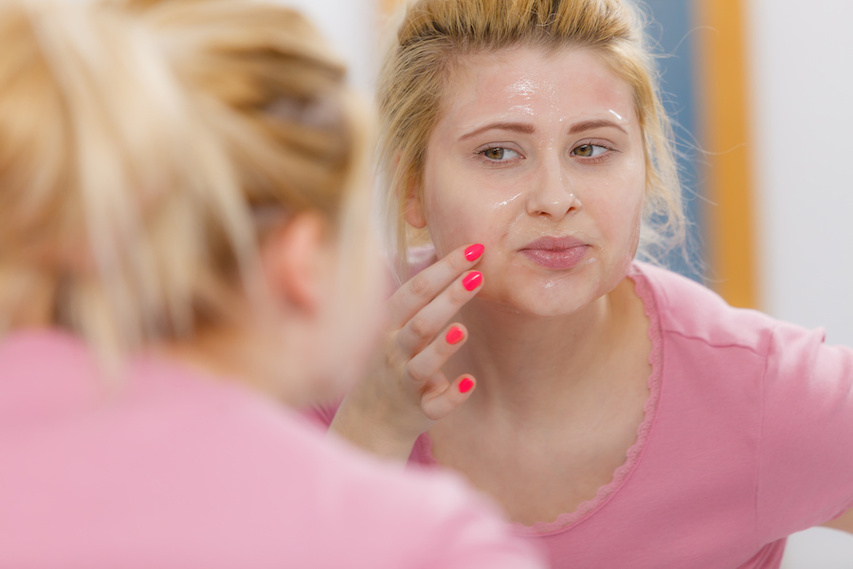
Oily skin is, well...exactly what it sounds like! This skin type tends to products more oil than “normal” skin does. Even after cleansing, people with oily skin may find their skin feels oily and “shiny” again within just a couple hours—even without applying additional moisturizer! An oily t-zone—the area across the forehead, down the center of the nose, chin, and oftentimes down the chest area—is very common in people with oily skin.
What is a "combination" skin type?
Combination skin has characteristics of different skin types in different areas of the face. The most common type of combination skin is where some areas are oily (usually the T-zone) and other areas of the face are normal or dry. However, oiliness and dryness aren’t the only “combination” skin types people might experience. Some people with combination skin may find they are acne-prone in some regions and have dry skin in others—so fun!
What is a sensitive skin type?

Skin sensitivity refers to how the skin reacts to external damage. People with “sensitive skin” tend to react more severely to skin damage, ingredients, and other stimuli. Irritants such as makeup, certain plants, perfumes, bath soaps, laundry detergents, cosmetics, household cleaners, and even UV rays can cause people with sensitive skin to have redness, itchiness, or even eczema (contact dermatitis).
Important note: It is also possible for the skin to become more sensitized over time as a result of products that are too harsh, such as rough physical exfoliators. Using ingredients like retinoids for a long period of time (many months or years) can also make your skin more sensitive.
What is acne-prone skin?

While technically not one of the 5 “skin types”, acne-prone skin is certainly a category of skin condition that many people are afflicted with. Acne-prone skin doesn’t necessarily have active acne but tends to be thicker with a greater tendency to have clogged pores and as a result, acne breakouts. If you only have a rare pimple, then you likely do not have acne-prone skin. Alternatively, if you get clogged pores and pimples regularly, your skin is likely part of the acne-prone skin category. Most people with acne-prone skin can still get their acne under control with the right products for their skin type.
Want to know how to determine your skin type? Take this quick DIY skin type test.
This test can be done at home in 3 easy steps!
The test:
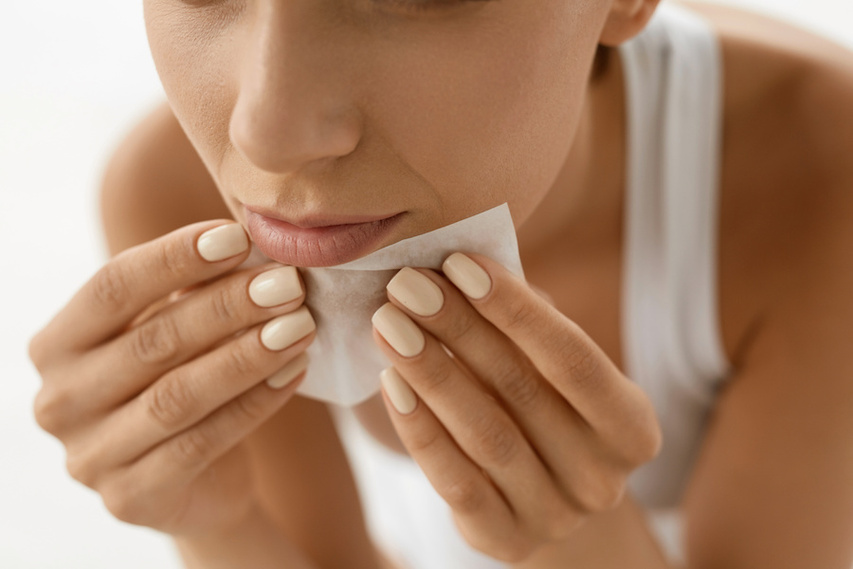
1. Wash your face with a gentle cleanser and gently pat dry with a clean towel (do not rub)
2. Wait 1 hour (do not apply anything additional to your skin—moisturizer included). During this time, your skin should return to its “natural state”.
3. Dab your T-zone (the middle of your forehead, the area between your eyebrows and your nose) with a clean, soft paper tissue.
The results:
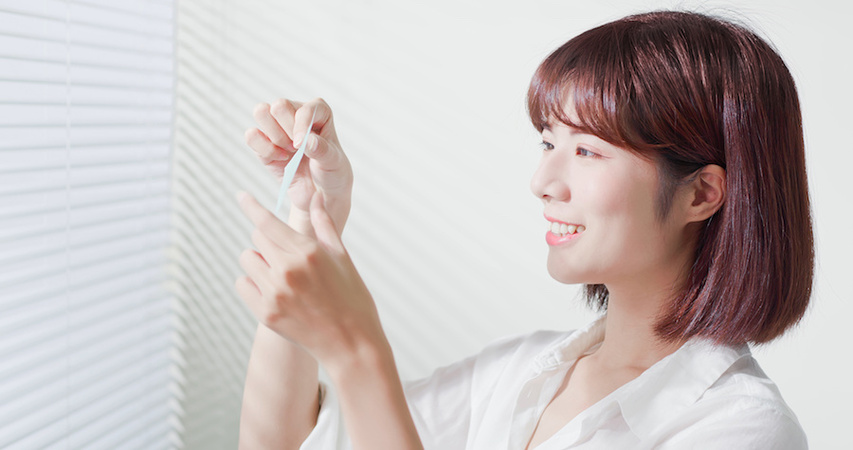
-
Normal skin: Your tissue should be clean with minimal to no traces of oil or skin flakes.
-
Oily skin: Your tissue will have some (perhaps a lot!) of visible oily spots.
-
Dry skin: Your tissue may have some flakes of dead skin cells (you may need to look closely for this).
-
Combination skin: Your tissue may have a combination of the above oil and flakes). If you suspect you have combination skin, you can use 2 different tissues—one to tab your T-zone and another to dab the other areas
-
Sensitive skin: If you have sensitive skin, your face will likely get red and itchy after you apply cosmetics or makeup following this test.
How to choose a skincare routine based on skin type?
There are certain skin care practices that apply to all skin types. This includes the use of mild oil-free cleansers and oil-free moisturizers. These products are usually mild enough to keep the skin of people with dry skin cleansed (without over stripping) and moisturized but are generally effective enough to remove excess oil from oily and combination skin.
For acne-prone skin, it is extra important to use products that are tailored to your skin type as well as any sensitivities you may have. Here are our dermatologist recommendations as a starting point:

Cleanser: The best cleansers are ones that contain salicylic acid. As this ingredient is oil-soluble it can penetrate the pore and get rid of excess sebum without overdrying the skin. This is especially helpful for people with acne-prone skin but suitable for others as well.
-
Dry and/or Sensitive skin: 0.5% Salicylic Acid
-
Normal or Oily skin: 2.0% Salicylic Acid
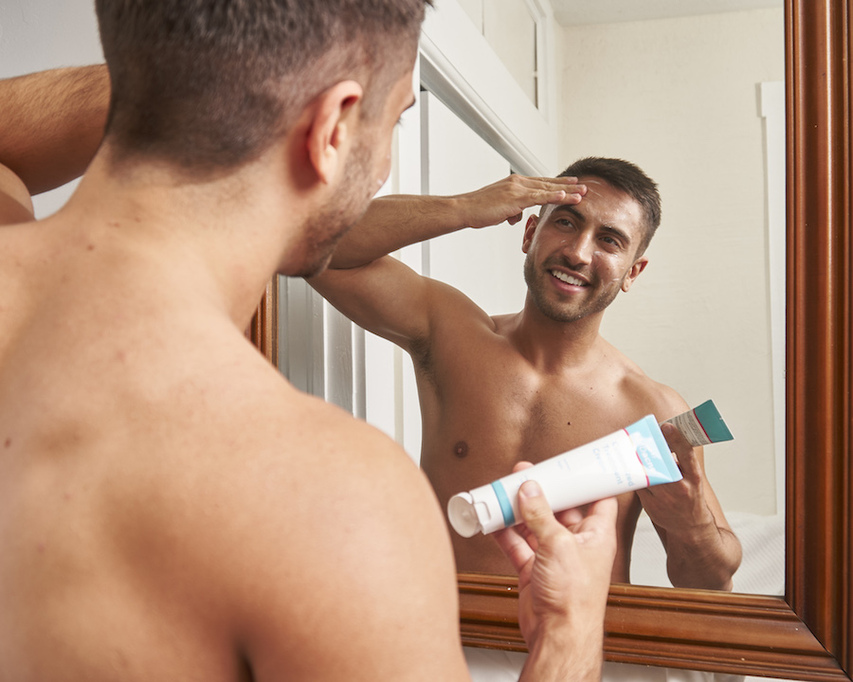
Acne Treatment Cream: Benzoyl peroxide is the single most effective ingredient for treating and preventing acne. Using a medicated BP treatment every night (or every other night) on oily, acne-prone areas (the entire areas not just individual pimples!) will help remove excess oil, unclog skin pores, and kill acne bacteria.
-
Sensitive and/or Dry Skin: Salicylic Acid 2.0%. For those with sensitive skin who do not tolerate Benzoyl Peroxide well, a treatment cream with Salicylic Acid is a good alternative
-
Normal Skin: Benzoyl Peroxide 2.5%
-
Combination Skin: 2.5% (in the oily areas only)
-
Oily Skin: Benzoyl Peroxide 2.5%-5% (start with 2.5%, work up to 5% as needed if skin can tolerate)
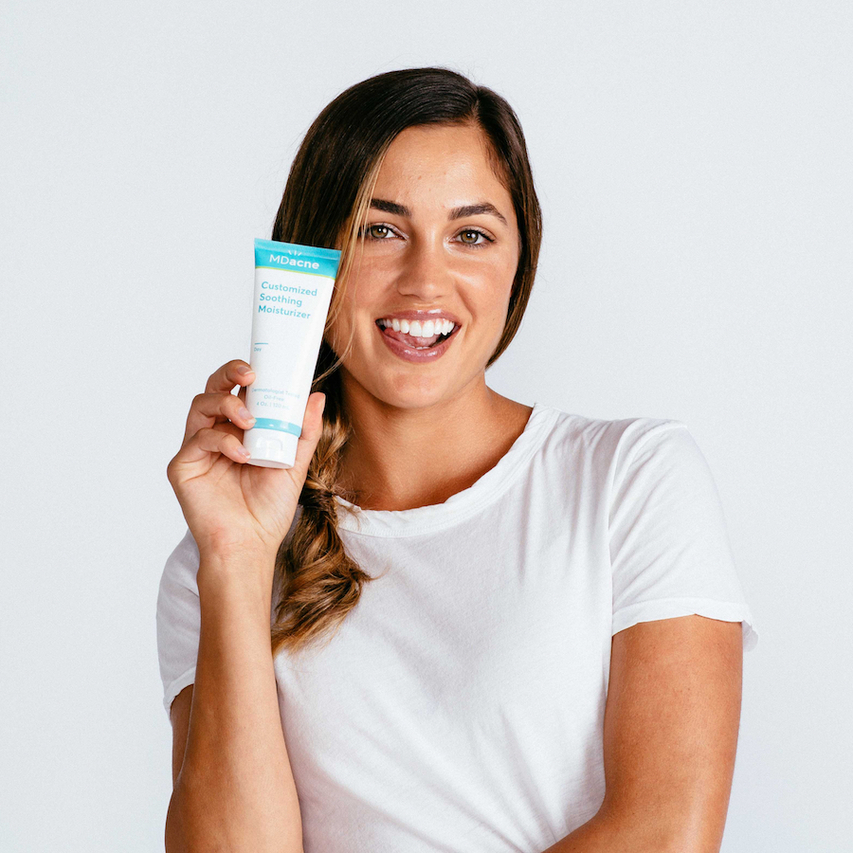
Moisturizer: The last product that should be included in every skincare regimen—yes, that includes all skin types—are oil-free moisturizers. The best oil-free moisturizers—especially for acne-prone skin—are oil-free and non-comedogenic, meaning they will not clog your pores. Look out for products that contain hyaluronic acid and/or dimethicone, which help bring moisture to the skin and help retain it.
***
To learn more about your skin and find the right products for you, download the MDacne app and check our FREE skin analysis
To find the right acne treatments for your unique skin, take the free skin assessment by clicking here.


